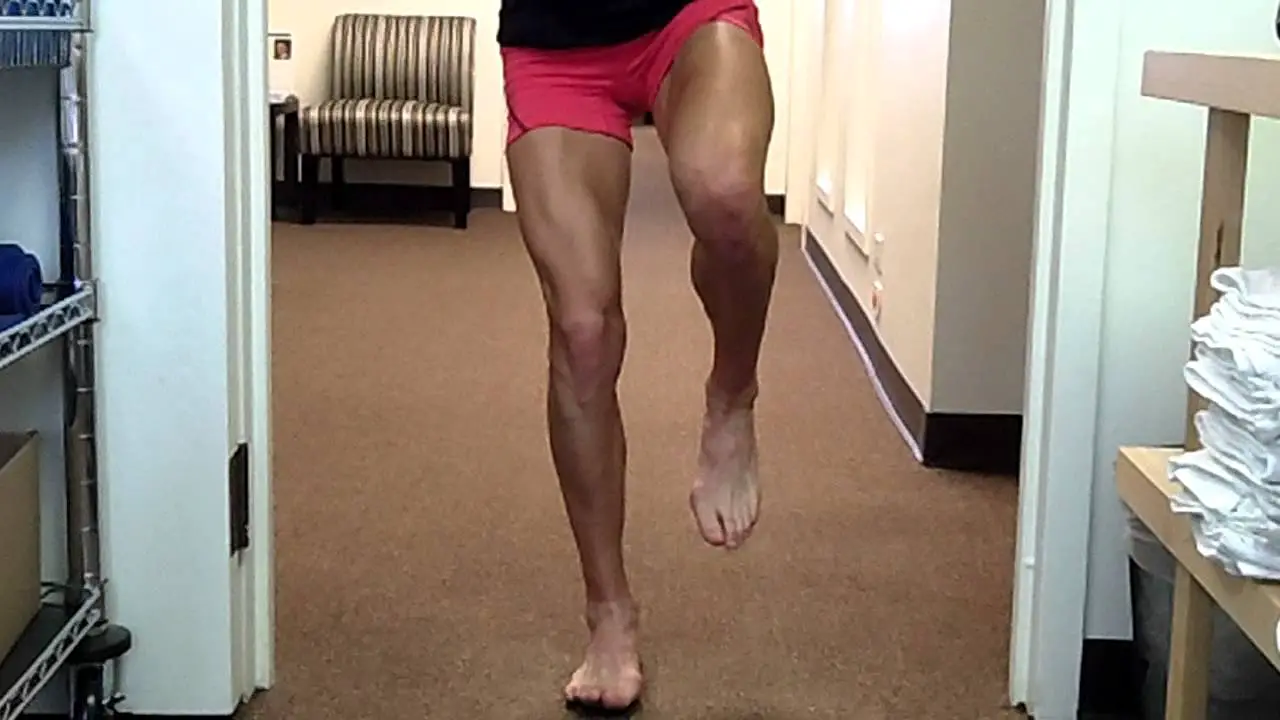How to, and how not to, do a single leg squat.
How to (and how not to) do a single leg squat, CORRECTLY !
Here Dr. Allen has one of his elite marathon and triathletes demonstrate how to correctly and incorrectly do a single leg squat. The single leg squat can show many of the pathologic movement patterns that occur in a lunge. The single leg squat is more difficult however because it requires balance and more strength. Many people do not do the single leg squat correctly as you will see in this video. Many drop the opposite hip which means that there is an inability to control the frontal plane pelvis via the stance leg gluteus medius and the entire orchestrated abdominal core. Most folks will drop the suspended hip and pelvis and thus collapse the stance phase knee medially. This can lead to medial knee pain (tracking disorder in the beginning) , a driving of the foot arch into collapse and impingement at the hip labrum. We know that when the knee moves medially that the foot arch is under duress. This problem is often the subliminal cause of all things foot arch collapse in nature, such as plantar fascitis to name a common one. Remember, optimal gluteus medius is necessary here. And the gluteus maximus is working to eccentrically lower the pelvis through hip flexion. So, if you do not consider the gluteus maximus a hip flexor then you are mistaken. Everyone thinks of it as a powerful hip extensor and external rotator. But do not be mistaken, in the closed chain it is a powerful eccentric controller of hip flexion and internal hip rotation.
Now, Lets take another look from a little different perspective….
Watch carefully. Did you pick up the bunion forming on both feet (Hallux Abducto Valgus)? This tells us that this individual has a faulty foot tripod, and is not able to get the base of the first metatarsal to the ground (remember the tripod is the base of the 1st metatarsal (big toe), the base of the 5th metatarsal (little toe) and the center of the heel). As a result, the muscles which are supposed to be assisting in forming the longitudinal and transverse arches are pulling the big toe (hallux) laterally. This also means that the medial side of the tripod is collapsing and unstable. This can be seen at :05 as she descends into the squat. You will also notice that this drives the knee medially and is causing some collapse of the arch. You also see the big toe flexing to try and create some arch stability through the flexor hallucis brevis.
As Dr Allen Points out, keeping the arch stable requires core stability, muscular strength and good proprioception. It also requires adequate flexibility (ie Range of Motion) of the 1st ray complex (the proximal and distal phalynx of the great toe and the 1st metatarsal). This range of motion can be seen from :12 to :20 and again from :42 to :51
We are The Gait Guys,
Shawn and Ivo (visit our blog daily at www.thegaitguys.tumblr.com)
source



